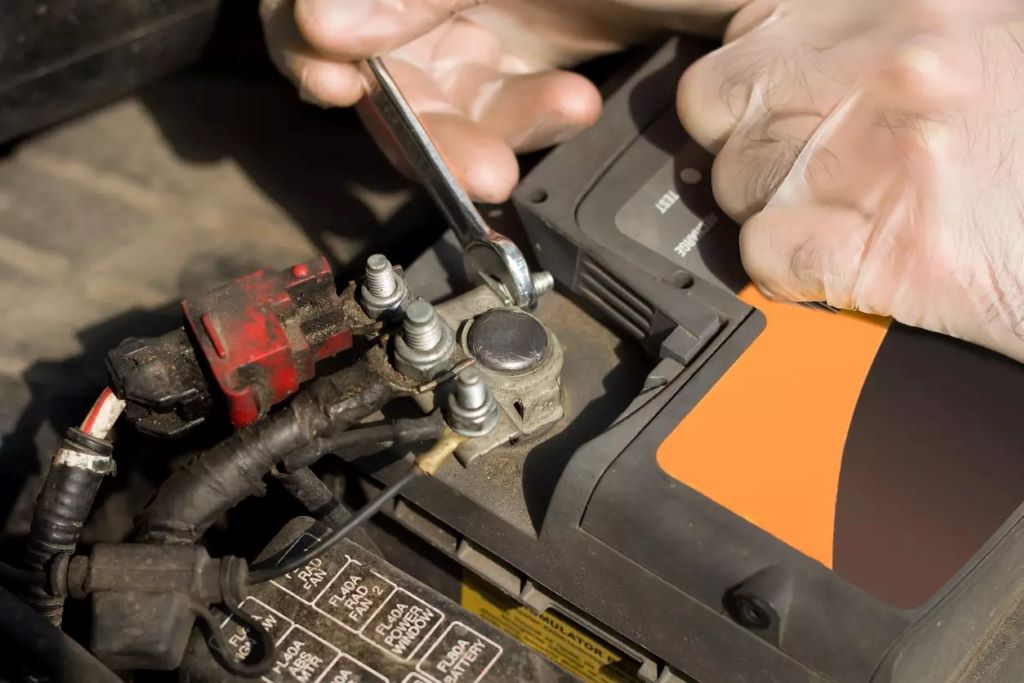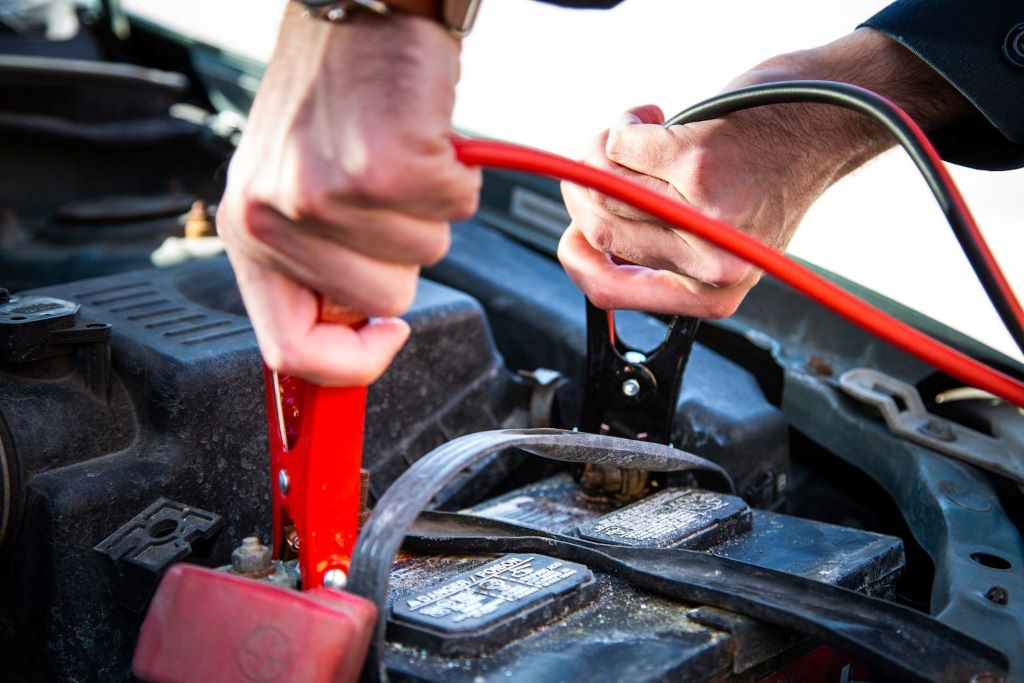
How to Disconnect Car Battery: The Ultimate Guide for Safe and Efficient Maintenance
Introduction: Why Disconnecting Your Car Battery Matters
In the world of automotive maintenance, knowing how to disconnect a car battery is an essential skill that every vehicle owner should master. Whether you’re troubleshooting electrical issues, replacing components, or simply performing routine maintenance, disconnecting the battery is often the first step. However, this seemingly simple task can lead to costly mistakes if not done correctly.
According to a survey by AAA, over 200,000 drivers in the U.S. face battery-related issues annually, many of which could have been avoided with proper care and handling. Disconnecting your car battery isn’t just about safety—it’s also about preserving the longevity of your vehicle’s electrical system.
In this comprehensive guide, we’ll walk you through everything you need to know about disconnecting a car battery safely and efficiently. From step-by-step instructions to expert tips, we’ve got you covered. So, let’s dive in and demystify this crucial process.
Understanding the Importance of Disconnecting Your Car Battery
Before we get into the “how,” it’s important to understand the “why.” Disconnecting your car battery serves multiple purposes, each critical to maintaining your vehicle’s health.
Preventing Electrical Damage
Modern vehicles are packed with sensitive electronics, from infotainment systems to advanced driver-assistance systems (ADAS). A sudden surge of electricity during maintenance can damage these components, leading to expensive repairs. By disconnecting the battery, you eliminate the risk of short circuits or electrical spikes.
Ensuring Personal Safety
Car batteries store a significant amount of energy. Mishandling them can result in electric shocks, burns, or even explosions. According to the National Highway Traffic Safety Administration (NHTSA), improper battery handling accounts for approximately 10% of DIY automotive accidents.
Extending Battery Life
Frequent disconnection and reconnection can wear out battery terminals and connections. However, when done correctly, periodic disconnection can help reset your vehicle’s computer systems, potentially improving performance and extending battery life.
Step-by-Step Guide: How to Disconnect a Car Battery
Now that you understand why disconnecting your car battery is so important, let’s break down the process into manageable steps. Follow these instructions carefully to ensure a safe and successful disconnection.
Gather Your Tools
Before you begin, make sure you have the following tools on hand:
- A wrench or socket set (usually 10mm or 13mm, depending on your vehicle)
- Safety gloves and goggles
- A memory saver device (optional but recommended)
Locate the Battery
Most car batteries are located under the hood, but some vehicles house them in the trunk or under the rear seats. Consult your vehicle’s manual if you’re unsure.
Turn Off the Vehicle
Ensure the engine is completely off and remove the key from the ignition. For added safety, engage the parking brake.
Identify the Terminals
Car batteries have two terminals: positive (marked with a “+” sign and usually red) and negative (marked with a “-” sign and usually black). Always start by disconnecting the negative terminal.
Disconnect the Negative Terminal First
Using your wrench, loosen the nut on the negative terminal clamp. Once loose, gently wiggle the clamp off the terminal. This prevents any accidental electrical shorts.
Disconnect the Positive Terminal
After the negative terminal is disconnected, repeat the process for the positive terminal. Be careful not to let the wrench touch any metal parts of the car while working on the positive terminal.
Secure the Battery
Once both terminals are disconnected, secure the battery to prevent it from tipping over. If you plan to store it, place it on a stable surface away from flammable materials.
Expert Tips for a Smooth Disconnection Process
Disconnecting a car battery may seem straightforward, but there are nuances that can make the process smoother and safer. Here are some expert tips to keep in mind:
Use a Memory Saver Device
Modern vehicles rely on complex computer systems that store settings like radio presets, clock time, and even seat positions. A memory saver device plugs into your car’s OBD-II port and provides power to these systems while the battery is disconnected.
Avoid Short Circuits
Always disconnect the negative terminal first and reconnect it last. This minimizes the risk of creating a circuit between the wrench and the car’s metal frame.
Inspect the Battery and Terminals
While you’re disconnecting the battery, take the opportunity to inspect it for corrosion, leaks, or other signs of wear. Corroded terminals can be cleaned with a mixture of baking soda and water.
Common Mistakes to Avoid
Even experienced DIYers can make mistakes when disconnecting a car battery. Here are some common pitfalls and how to avoid them:
Forgetting to Turn Off the Engine
Attempting to disconnect a battery while the engine is running can cause serious electrical damage. Always double-check that the vehicle is completely off before proceeding.
Using the Wrong Tools
Using pliers or an ill-fitting wrench can strip the nuts on the battery terminals, making future maintenance more difficult. Invest in a quality wrench or socket set specifically designed for automotive work.
Ignoring Safety Precautions
Skipping safety gear like gloves and goggles might save you a few minutes, but it puts you at risk of injury. Always prioritize safety over convenience.
The Science Behind Battery Disconnection
To truly appreciate the importance of disconnecting your car battery, it helps to understand the science behind it. A car battery operates on a 12-volt system, but it can deliver hundreds of amps of current. This high current poses risks such as:
- Electrical Shorts: A direct connection between the positive and negative terminals can cause sparks or even ignite hydrogen gas emitted by the battery.
- Component Damage: Sudden power loss can corrupt data stored in your vehicle’s onboard computers, leading to malfunctions.
By disconnecting the battery properly, you mitigate these risks and protect both yourself and your vehicle.
Real-Life Scenarios: When Should You Disconnect Your Car Battery?
There are several situations where disconnecting your car battery is necessary or beneficial. Let’s explore some common scenarios:
Replacing the Battery
If your battery is old or failing, disconnecting it is the first step in the replacement process.
Performing Electrical Repairs
Any work involving the vehicle’s wiring or electrical components requires a disconnected battery to prevent accidental shorts.
Storing the Vehicle Long-Term
If you’re storing your car for an extended period, disconnecting the battery can prevent parasitic drain and prolong its lifespan.
Changing the Power Steering Pump on a Kenworth T680: A Step-by-Step Guide
FAQs About Disconnecting Car Batteries
- Why should I disconnect the negative terminal first?
Disconnecting the negative terminal first reduces the risk of creating a circuit between the wrench and the car’s frame. - Can I disconnect my car battery without losing settings?
Yes, by using a memory saver device, you can preserve your vehicle’s settings. - How long does it take to reset a car’s computer after disconnecting the battery?
It typically takes a few driving cycles for the computer to recalibrate. - Is it safe to disconnect a car battery while the engine is running?
No, this can cause severe electrical damage. - What causes battery terminal corrosion?
Corrosion is often caused by acid leakage or exposure to moisture. - Can I clean corroded terminals myself?
Yes, use a mixture of baking soda and water to neutralize the acid and scrub with a wire brush. - How often should I disconnect my car battery?
Only disconnect it when necessary, such as for repairs or long-term storage. - What happens if I connect the battery terminals backward?
Reversing the polarity can damage your vehicle’s electrical system. - Do I need special tools to disconnect a car battery?
A basic wrench or socket set is sufficient, but specialized tools can make the job easier. - Can disconnecting the battery fix electrical issues?
In some cases, disconnecting and reconnecting the battery can reset the vehicle’s computer and resolve minor glitches.
Conclusion: Empower Yourself with Knowledge
Knowing how to disconnect a car battery is a fundamental skill that can save you time, money, and frustration. By following the steps outlined in this guide, you can perform this task safely and confidently. Remember, preparation and attention to detail are key to avoiding common mistakes and ensuring a smooth process.
Whether you’re a seasoned DIY enthusiast or a beginner, mastering this skill will empower you to take control of your vehicle’s maintenance. So, the next time you find yourself needing to disconnect your car battery, you’ll be ready to tackle the task like a pro.
Read More:
Don’t Steer Wrong: How Often to Change Power Steering Fluid
DIY Car Dent Repair: Easy Methods to Fix Small Dents at Home




